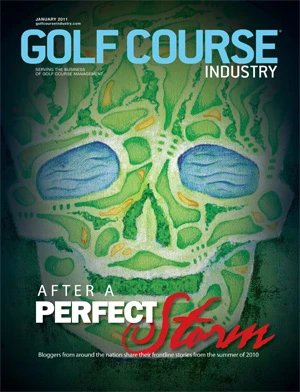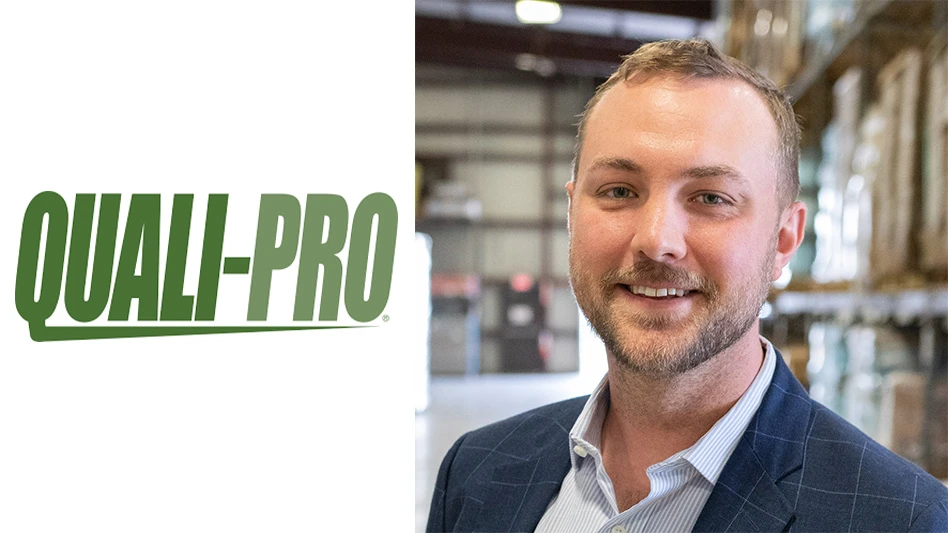These days, both politically and economically, water is a hot topic. What is a superintendent to do when the irrigation water source they have available is not so healthy? Besides agronomy, human resources and the myriad of other subjects that are part of a superintendent’s job, greenkeepers are also expected to know a little bit about water chemistry. When it comes to serious H2O issues, it’s best to seek expert advice. In chatting with several irrigation consultants and superintendents, the message is clear – there is no magical cure.
“It’s a complex equation,” says Erik Christiansen, a former superintendent, who is president of irrigation consulting firm EC Design Group. “You really have to focus on the 1,000-foot snapshot of where your water is in terms of bicarbonates, sodium, and things like that, and how they react to one another. There is no magic bullet to cure a lot of things.”
Rather than a magic bullet, there are trends and fads. “Ten to 15 years ago, everyone was injecting acid,” Christiansen says. “But acid is a corrosive agent and is highly hazardous, so there was a liability aspect to it. Then, there was what I call ‘voodoo pipe’ where you hooked up electrodes and magnets to your irrigation pipes. We had claims from people that if they could neutralize bicarbonates they could cure cancer. Superintendents took a flyer on it and said they would try it out for a few hundred bucks, but quickly realized you get what you pay for.”
The next trend in treating H2O was SO2 (sulphur) burners. They were handy because they didn’t use acid and the by-product is not toxic; that said, they have their own issues. “You can lower the pH of the water too far, killing the vegetation and possibly corroding your equipment,” Christiansen says
Superintendents need to find the right balance that takes care of bicarbonates, sodium and any other undesirables you may have in your water that your plant material doesn’t need. There are many tools out there to choose from, but before choosing the right tools, you first need to understand your soil structure and how it relates to your water. Even within a course, soil types can differ, so you might need to treat your water differently, depending on what the structure of the soil is at various points on your course. Some are now dealing with this issue by placing soil moisture sensors on their course.
“Multiple sensors that detect salinity and soil temperature are now another tool superintendents can use to program how they disperse their water,” says Christiansen. “These sensors give them the information to know how to treat the water in various areas.
Strategically, these soil sensors send signals back to the maintenance shop, indicating soil moisture content and salinity levels, so greenkeepers can make more educated decisions. For example, you may discover you have a certain quality of water that is good for all parts of your course, except for your greens.”
The Cadillac solution
Christiansen has had clients purchase a Reverse Osmosis (RO) plant, but he cautions this is a multi-million dollar solution that consumes a lot of energy. And it has drawbacks, too. “There are problems with RO,” he says. “It makes that water so sweet – with the mineral content it purged and taken out of the water – that asit travels through the facility’s irrigation system it looks to pick up some of those minerals and sometimes it gets them from your system’s stainless steel components.”
Get to the source of the matter
Dan Dinelli, CGCS, superintendent at North Shore Country Club, a private club 20 miles north of Chicago, agrees. Water quality management begins with examining your source and determining whether there is another option, he says. That’s what North Shore Country Club did. The club irrigates using well water. In the early 90s, it was drawing water from a well 2,200 feet below the surface – part of an ancient ocean bed. The salinity levels were acceptable for a time, but then they started to increase in concentration to more than 320 parts per million in sodium alone; bicarbonate levels were high, too.
“Basically, by the Fourth of July, any foliage our sprinkler system hit would result in premature defoliation to the trees and shrubs,” he explains. “If we didn’t get much rain over a two-week period, we would see a white crust develop on the soil where a divot was taken where the salts had built up. Even though the Chicago area is not known for poor water, unfortunately, we were one of the only facilities tapped into an aquifer that did have poor water.”
To convince his board to switch wells, Dinelli documented through water tests conducted a couple of times per season what the water levels were in terms of quality and how it was changing over time as the water was being pulled from that source. He recalls driving through the golf course one night a few years back when the sprinkler system was on; he put his wipers on and could hardly see through the windshield caused by the salt’s white film. Dinelli gathered this sample in a water bottle, along with water from a neighboring course that was on a different well, then took a small quantity of each to the next board meeting – pouring some onto an oval glass table to illustrate the water salinity to the board.
Dinelli also documented the tissue levels in the turf. “Our Poa annua was starting to die out about mid summer,” he says. “We convinced the club to divorce ourselves from that well and drill a new one to a tune of $250,000, going into the next aquifer up. This source was much better, although it was still high in bicarbonates.”
Once he had a better source from which to draw his irrigation water, Dinelli says it was then time to explore other tools and cultural practices to improve his water quality further. The veteran superintendent relies on four main tools to manage his H20: organics; sulphur; other cations (positively charged ions that are formed when an atom loses one or more electrons during a chemical reaction) such as potassium and calcium; and wetting agents. The greenkeeper also uses his irrigation system as a delivery method for several of these inputs.
“We inject potassium-nitrate, calcium-nitrate and sulphur, all to address issues that our irrigation water has, but ultimately to improve soil and plant health,” Dinelli says. Sulphuric acid buffered with urea is injected into the irrigation water that help bring the pH levels down, acidifying the water source. Humic acid is also injected into the water as well as the use of compost topdressings. These organic materials help build soil structure as well as act as a chelating agent for the other elements injected into the irrigation water.
Finally, Dinelli lauds penetrants and wetting agents as another powerful tool. “They are basically non-ionic soaps,” he says. “Much like soap does when washing hands or dishes, these wetting agents break the surface tension of water, allowing the water to penetrate the soil easier, quicker and better.”
These four tools combined allow the course to improve its water quality and keep the water moving through the root zone. “I don’t think there is a silver bullet out there,” he says. “Depending on how poor the water quality is, you need to rely on several tools to manage turf health.”
All these tools are ineffective unless one understands how these treatments react with the soil and the turf. “On a sandy site, for example, you might manage growing grass that cannot tolerate poor water quality with a high salt content,” Dinelli says. “If it rains a lot, however, you can get away with poor water quality versus someone who has little rain and tight soil.”
Regardless of soil type and what water quality issues, it’s essential supers do their homework and rely on water specialists to help determine the sensible solutions vs. the hocus-pocus.
“There is still some snake oil out there,” Christiansen says. “Superintendents are very trusting. What we as consultants do is to always try to help people stay focused on real options and real success stories. We are full of examples of projects that used simple tools and the pros and the cons of various methods. Quite frankly, a club’s membership, when spending money, hates to hear, ‘oh, that just didn’t work out.’ You need to make sure, you are making good decisions.” GCI
David McPherson is a Toronoto-based freelance writer.
READ THE DIGITAL EDITION>>>

Explore the January 2011 Issue
Check out more from this issue and find your next story to read.
Latest from Golf Course Industry
- From the publisher’s pen: Technology diffusion and turf
- Applications open for 2025 Syngenta Business Institute
- Smart Greens Episode 1: Welcome to the digital agronomy era
- PBI-Gordon promotes Jeff Marvin
- USGA investing $1 million into Western Pennsylvania public golf
- KemperSports taps new strategy EVP
- Audubon International marks Earth Day in growth mode
- Editor’s notebook: Do your part





